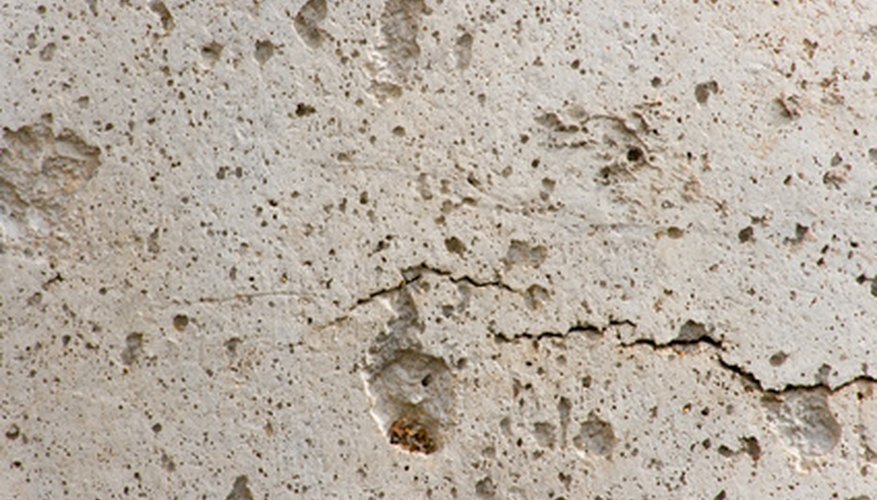Bumps in a sheet vinyl floor are unsightly. If they turn up in an old vinyl floor, you can at least feel the satisfaction of having got a reasonable amount of use out of the flooring. But in a newly laid vinyl sheet floor, bumps can be really discouraging, because whatever cause you determine is relevant in your specific case, the only cure is to take up the sheet vinyl, repair the cause of the problems and lay new flooring.
Poor Subfloor Preparation
The most likely cause of bumps in vinyl sheet flooring is that the subfloor or underlayment was not prepared correctly. The flooring under the vinyl floor must be absolutely level and free of dents or bumps, and it must be absolutely clean. Even a grain of sand left on the subfloor will be exaggerated by the sheet vinyl into a visible bump. Bumps and dents in a subfloor or underlayment can be corrected by applying a floor levelling compound such as Quikrete or ROBERTS 1800 Vinyl Sheetgoods Embossing Leveler. The surface must be free of grit and dust and dry before you use the compound. To make sure the surface is clean before you put down new sheet vinyl flooring (or any other type of flooring, for that matter), vacuum it thoroughly two or three times, then go over it with a damp mop to pick up any remaining dust.
- The most likely cause of bumps in vinyl sheet flooring is that the subfloor or underlayment was not prepared correctly.
- Even a grain of sand left on the subfloor will be exaggerated by the sheet vinyl into a visible bump.
Moisture
Bumps in vinyl sheet flooring could be due to moisture coming up through the concrete slab on which the vinyl flooring has been laid. If this is the cause of the bumps, you could seal the concrete before laying a new floor, but you should also consider whether vinyl flooring is the best choice if the concrete is very wet. New concrete takes a while to mature. Until it does, the moisture content will likely be too high to lay a vinyl floor.
- Bumps in vinyl sheet flooring could be due to moisture coming up through the concrete slab on which the vinyl flooring has been laid.
- If this is the cause of the bumps, you could seal the concrete before laying a new floor, but you should also consider whether vinyl flooring is the best choice if the concrete is very wet.
Nail Heads
Another common cause of bumps in vinyl sheet flooring is that the nail heads in the subflooring or underlayment are popping up due to movement in the floor. If this is the case, you should attach the subflooring or underlayment with screws that are countersunk into the material. Fill the area between the top of the countersunk screw head and the material with wood filler, and sand the filler to make sure it is absolutely level with the subfloor or underlayment.
